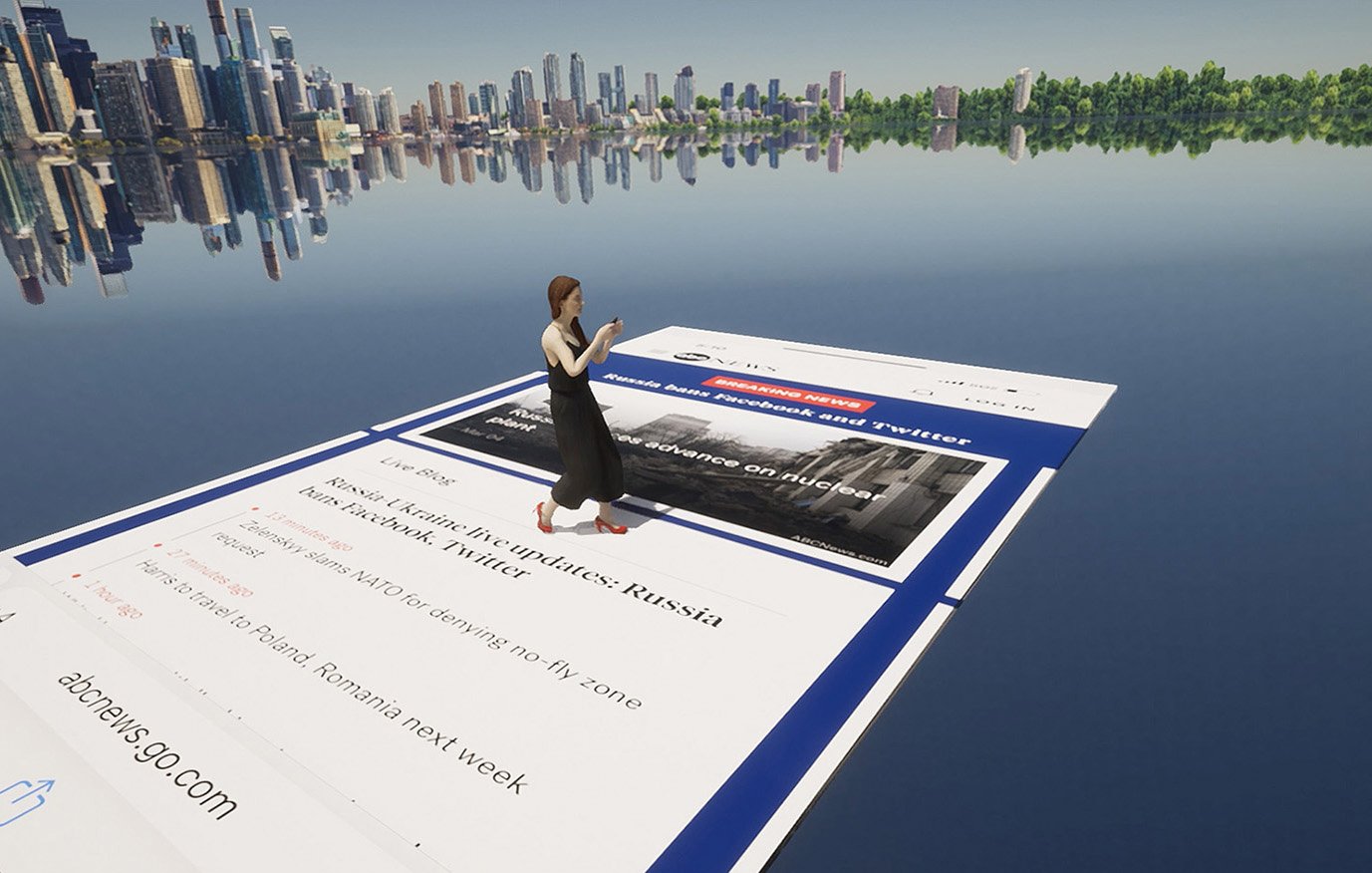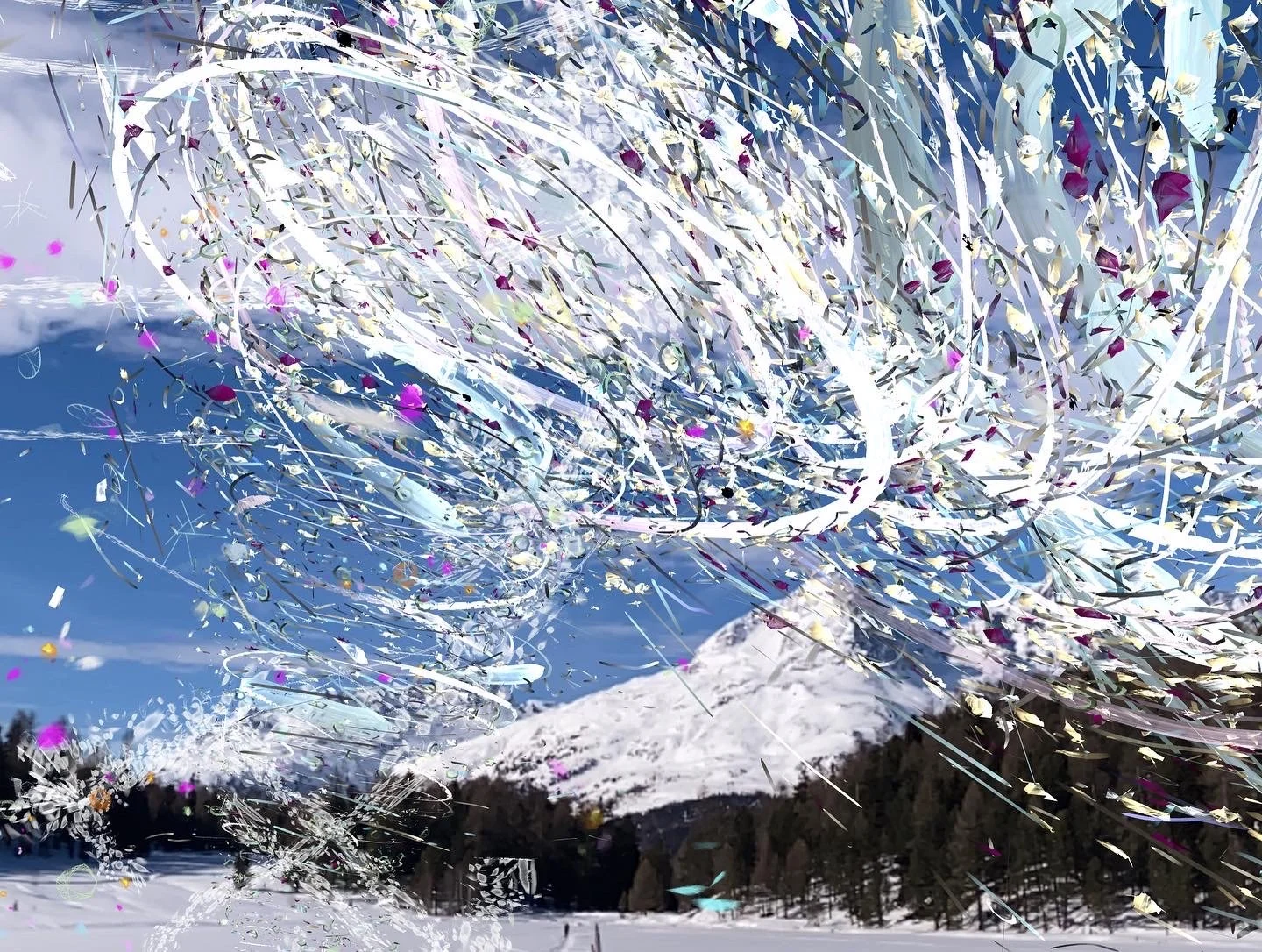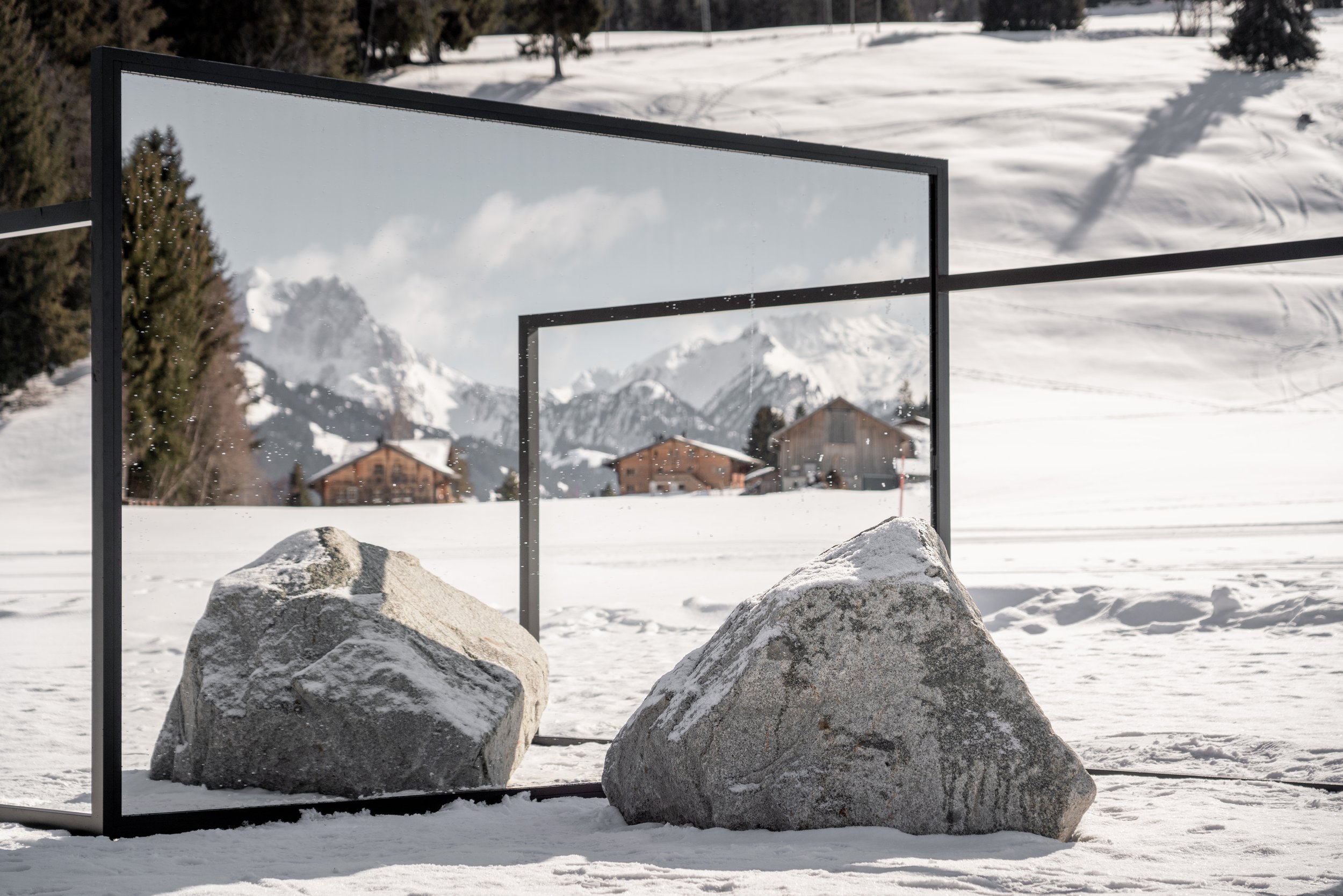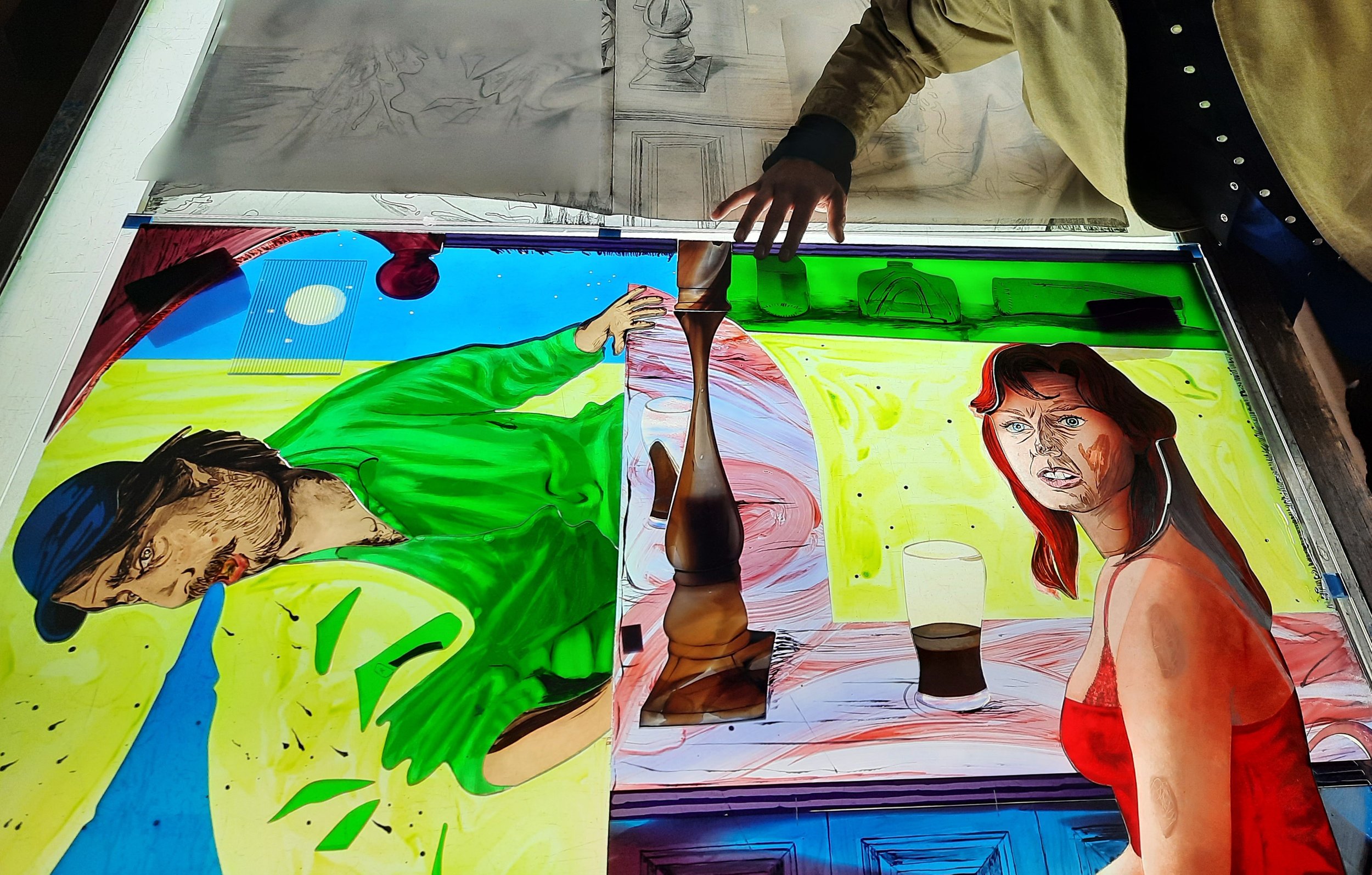
Rhythms & Layers | Kunstraum Juraplatz | Biel/Bienne
Kunstraum Juraplatz | Biel/Bienne
1. – 22. März 2024
Rhythms & Layers
Reto Camenisch, Dominik Stauch
Rhytms & Layers © Reto Camenisch und Dominik Stauch
Während eines gemeinsamen ayurvedischen Aufenthaltes in Indien pflegten Camenisch und Stauch künstlerisch und menschlich intensiven Austausch. Sie entschlossen sich diese gemachten Erfahrungen in einer zweiteiligen Arbeit im Espace Juraplatz zu visualisieren.
Die im Innenraum gezeigte Printarbeit bezieht sich auf den Austausch in Indien, das Video als Resultat der in situ entstandenen fotografischen Untersuchungen und als Weiterführung eben dieser Printarbeit. Kreisende Bewegungen, fotografische Untersuchungen, falsche Spiegelungen und Unschärfen. Das Bildmaterial inhaltlich verdichtet durch «minderwertige Abzüge auf Thermopapier» und in einer Timeline zusammengefügt.
Lors d'un séjour ayurvédique commun en Inde, Camenisch et Stauch ont entretenu des échanges artistiques et humains intenses. Ils ont décidé de visualiser ces expériences vécues dans un travail en deux parties à l'Espace Juraplatz.
Le travail imprimé présenté à l'intérieur se réfère à l'échange en Inde, la vidéo est le résultat des recherches photographiques réalisées in situ et le prolongement de ce même travail imprimé. Mouvements circulaires, recherches photographiques, faux reflets et flous. Le contenu des images est condensé par des "tirages de mauvaise qualité sur papier thermique" et assemblé dans une chronologie.
Durante un soggiorno ayurvedico in India, Camenisch e Stauch hanno dato vita a un intenso scambio artistico e umano. Hanno deciso di visualizzare queste esperienze in un'opera in due parti all'Espace Juraplatz.
Il lavoro di stampa esposto all'interno si riferisce allo scambio in India, il video è il risultato delle indagini fotografiche create in loco e la continuazione di questo stesso lavoro di stampa. Movimenti circolari, indagini fotografiche, falsi riflessi e sfocature. Il contenuto del materiale fotografico è condensato da "stampe inferiori su carta termica" e combinato in una linea temporale.
During a joint Ayurvedic stay in India, Camenisch and Stauch engaged in an intensive artistic and human exchange. They decided to visualize these experiences in a two-part work at Espace Juraplatz.
The print work shown in the interior refers to the exchange in India, the video as the result of the photographic investigations created in situ and as a continuation of this same print work. Circular movements, photographic investigations, false reflections and blurring. The content of the image material is condensed by "inferior prints on thermal paper" and combined in a timeline.
(Text: Kunstraum Juraplatz, Biel/Bienne)

















